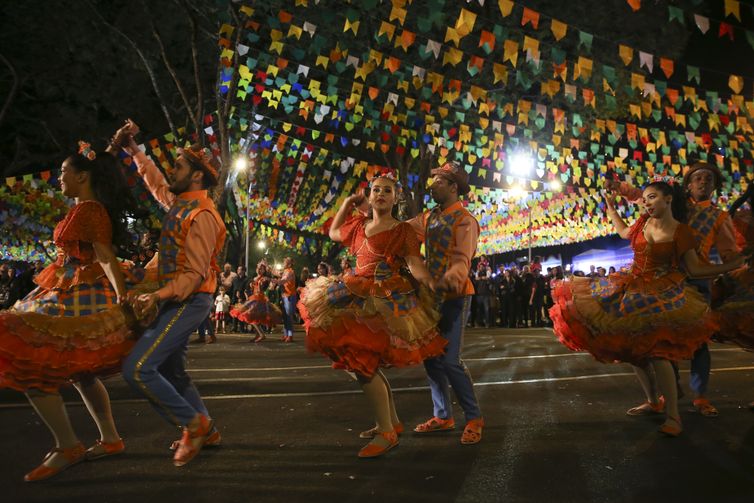Brazil’s traditional June festivities—the Festas Juninas, as they are known in the country, originated in Catholic Europe and were brought to the country by the Portuguese during the colonial period. They celebrate the Catholic solemnities of Saint Anthony, Saint John the Baptist, Saint Peter, and Saint Paul. Featuring bonfires, fairs, and square dancing, these festivities blend affection, religious teachings, and stories that span centuries of popular history.

Ana Beatriz Dias Pinto, PhD in Theology and professor at the Pontifical Catholic University of Paraná (PUCPR), explains that in Brazil, the traditional June festivities go beyond liturgical dates. They are collective experiences that blend devotion, food, dance, and emotional memories.
“Each June festival fair, each bonfire lit, and each good luck ritual is a form of living catechesis—taught not through books, but through actions, flavors, and rhythms that shape a universe of meaning for popular religiosity and reveal much about our culture,” says Pinto.
The professor explains that the tradition of the bonfire originates from an agreement between Elizabeth and Mary, two pregnant cousins, the then soon-to-be mothers of John the Baptist and Jesus. They decided that when John was born, Elizabeth would light a bonfire to let Mary know. “That was how the signal began—a fire that is still lit at every June festival in Brazil to celebrate the birth of the only saint honored on the day of his birth (June 24), rather than the day of his death.”
The John the Baptist bonfire symbolizes the light of life in moments of darkness and expresses the hope of casting out and burning away everything that takes the joy out of living, notes the professor. There is also the tradition of jumping over the bonfire, which represents purification, rebirth, and the fulfillment of desires.
Another traditional symbol of the June festivities, the arraial is the recreation of a temporary sacred village, featuring a church, a priest, a wedding, best men, and maids of honor.
“It is a miniature of Catholic social organization itself, but in a colorful and playful form that pays homage to country folk—the people who provide food to urban centers,” added Pinto.
Quadrilha folk dance and quermesse
According to the professor, the quadrilha—a partnered dance that became Brazilianized at our fairs—originated from French ballroom dancing and gradually evolved into a choreographed dance in Brazil.
The term quermesse, used to refer to a church fair, comes from the Flemish word kerkmisse, which originated in the region of Flanders (now part of Belgium). The festival began as a charity event and, over time, in Brazil, it incorporated forró dance, game stalls, bingo, and hot dogs.
“At its core, it remains a community gathering—giving thanks for the harvest and honoring that people not only want mass but also seek celebration, unity, coexistence, and friendship. These values are present in Brazilian social formation both in the countryside and in the city,” she explains.
Food and beverage
The June festivities in Brazil coincide with the harvest of certain foods, such as corn, peanuts, pine nuts, and grapes. These ingredients are used to make dishes like canjica, pamonha, corn cake, and curau—all made from corn or its derivatives—as well as pé-de-moleque (a sweet made with peanuts) and boiled or roasted pine nuts. Drinks such as quentão (sugarcane spirit, sugar, cloves, cinnamon, ginger, citrus peel) and mulled wine, which have Portuguese origins, emerged as social traditions to warm both body and soul.
“They all represent a form of thanksgiving for a successful harvest—an expression of gratitude disguised as delicacies,” explains the theology professor.
Role of the festivities
For Pinto, the June festivities are even more significant today, in an age of digital communication and social networks. They serve as a collective ritual, affective memory, and an expression of authentic popular spirituality—conveying belonging, joy, and hope through dances, games, and the celebration of the harvest of typical winter foods.
“The June festivities are a symbolic expression of Brazilian devotional and cultural imagery, filled with prayers, good luck charms, and a shared awareness that the year has reached its halfway point—inviting each of us to look back, give thanks, and rekindle our faith for what is yet to come,” concluded the professor.
Crédito arquivo Nacional EBC
Leia Mais em: O Maringá











